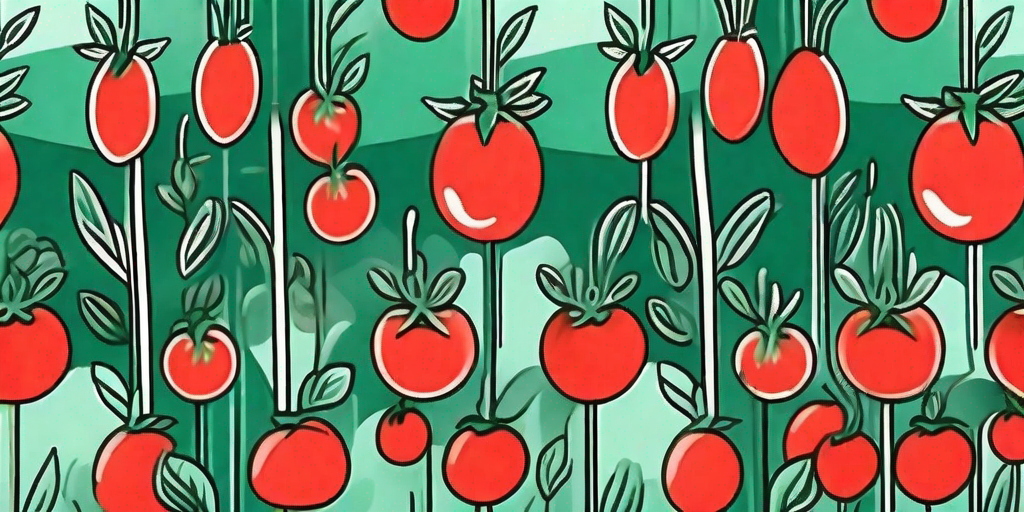
Welcome to the world of tomato staking, where the stakes are high, but the rewards are even higher. If you've ever dreamed of growing plump, juicy tomatoes in your own backyard, you're in the right place. Tomato staking is not just a gardening technique; it's a way of life. So, put on your gardening gloves, grab your stakes, and let's get started!
Why Stake Tomatoes?
Staking tomatoes is not just a whimsical pastime for those with too much time on their hands. It's a tried and true method for maximizing your tomato yield and minimizing disease. When tomatoes are left to sprawl on the ground, they're more susceptible to pests and diseases. Plus, they're more likely to rot before you have a chance to enjoy them. Staking keeps your tomatoes off the ground, safe from harm, and within easy reach for picking.
But it's not just about practicality. Staking tomatoes can also improve the quality of your fruit. By allowing more sunlight to reach the leaves, staking can help your tomatoes ripen more evenly. Plus, it makes your garden look neat and tidy, which is always a bonus.
Choosing the Right Stakes
Not all stakes are created equal. The right stake for your tomatoes depends on a variety of factors, including the size of your plants, the type of tomatoes you're growing, and your personal gardening style.
Wooden stakes are a classic choice. They're sturdy, inexpensive, and easy to find. However, they can rot over time, so they may not be the best choice for long-term use. Metal stakes, on the other hand, are more durable, but they can get hot in the sun and potentially burn your plants.
There are also specialized tomato stakes available, such as tomato cages and trellises. These can provide more support for larger plants, but they can also be more expensive and take up more space in your garden.
Staking Techniques
There's more than one way to stake a tomato. The method you choose will depend on your personal preferences, the type of stakes you're using, and the specific needs of your plants.
Single Staking
Single staking is the simplest method. It involves driving a stake into the ground next to each tomato plant and tying the plant to the stake as it grows. This method is best for determinate varieties of tomatoes, which are smaller and more compact.
When tying your tomatoes, be sure to use a soft material, such as cloth or twine, to avoid damaging the stems. Also, be careful not to tie the stems too tightly, as this can restrict growth and potentially harm your plants.
Caging
Caging is another popular method, especially for indeterminate varieties of tomatoes, which are larger and more sprawling. This method involves placing a cage around each plant, allowing the plant to grow up and through the cage.
Cages provide more support than single stakes, but they can also be more difficult to install and take up more space in your garden. However, they can be a great option if you're dealing with larger plants or if you simply prefer a more hands-off approach to staking.
Common Mistakes to Avoid
Staking tomatoes is not rocket science, but there are a few common mistakes that can trip up even the most experienced gardeners. Here are a few to watch out for:
- Staking too late: It's best to stake your tomatoes when they're still young and flexible. If you wait until they're fully grown, you risk damaging the stems.
- Using the wrong stakes: As mentioned earlier, not all stakes are suitable for all types of tomatoes. Be sure to choose the right stakes for your plants.
- Tying too tightly: When tying your tomatoes to their stakes, be careful not to restrict their growth. Use a soft material and tie loosely to avoid damaging the stems.
FAQs
- When should I stake my tomatoes? It's best to stake your tomatoes when they're about 1-2 feet tall. This will give them enough support to grow strong and healthy.
- What type of stake should I use? The type of stake you use will depend on the size and type of your tomato plants. Wooden stakes are a good choice for smaller, determinate varieties, while cages or trellises may be better for larger, indeterminate varieties.
- How do I tie my tomatoes to their stakes? Use a soft material, such as cloth or twine, and tie loosely to avoid damaging the stems. Be sure to check the ties regularly and adjust as needed as your plants grow.
So there you have it - the secret to growing juicy tomatoes. With a bit of patience, some strategic staking, and a dash of gardening humor, you'll be enjoying your own homegrown tomatoes in no time. Happy staking!











